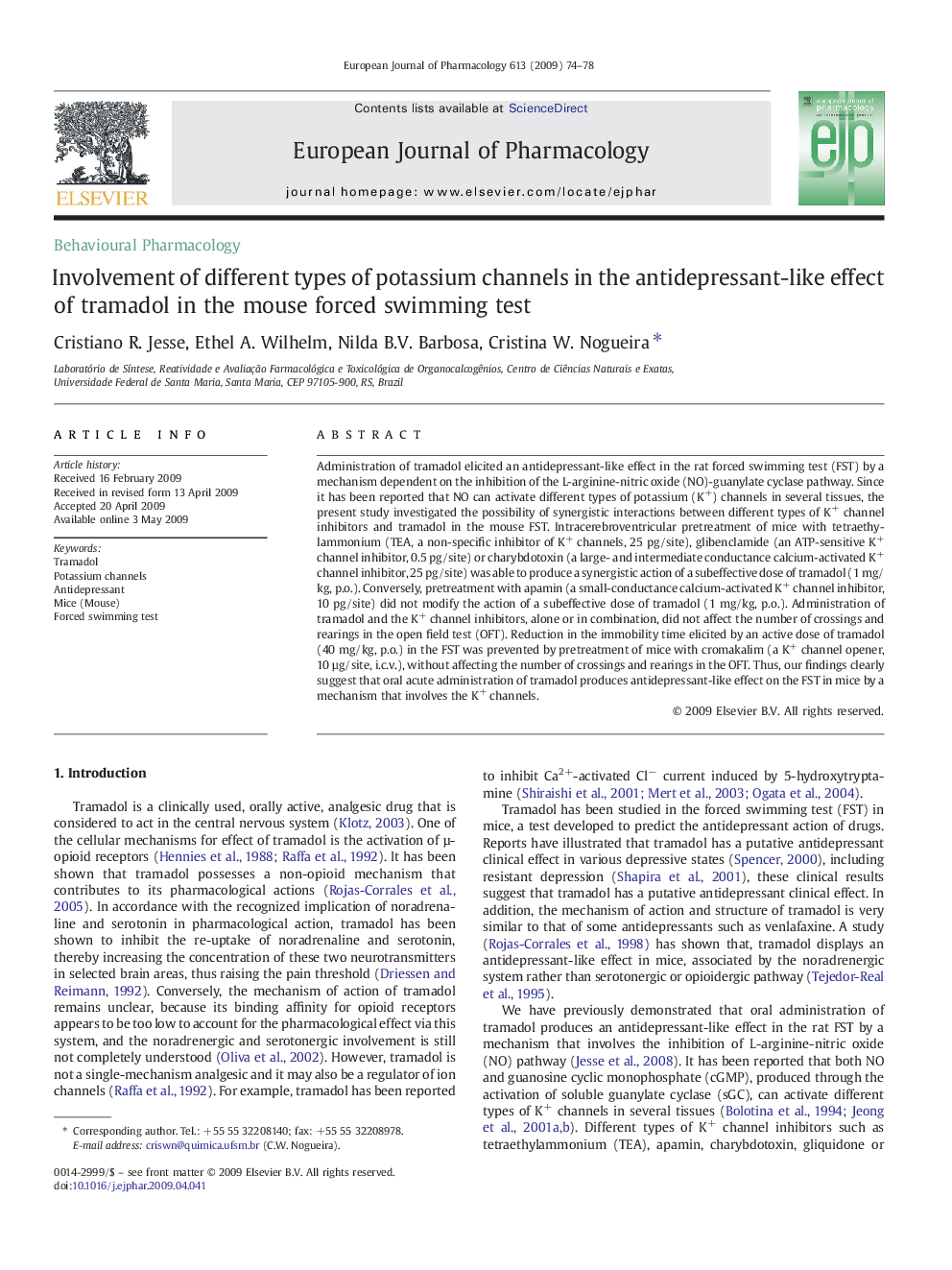| Article ID | Journal | Published Year | Pages | File Type |
|---|---|---|---|---|
| 2534284 | European Journal of Pharmacology | 2009 | 5 Pages |
Administration of tramadol elicited an antidepressant-like effect in the rat forced swimming test (FST) by a mechanism dependent on the inhibition of the L-arginine-nitric oxide (NO)-guanylate cyclase pathway. Since it has been reported that NO can activate different types of potassium (K+) channels in several tissues, the present study investigated the possibility of synergistic interactions between different types of K+ channel inhibitors and tramadol in the mouse FST. Intracerebroventricular pretreatment of mice with tetraethylammonium (TEA, a non-specific inhibitor of K+ channels, 25 pg/site), glibenclamide (an ATP-sensitive K+ channel inhibitor, 0.5 pg/site) or charybdotoxin (a large- and intermediate conductance calcium-activated K+ channel inhibitor, 25 pg/site) was able to produce a synergistic action of a subeffective dose of tramadol (1 mg/kg, p.o.). Conversely, pretreatment with apamin (a small-conductance calcium-activated K+ channel inhibitor, 10 pg/site) did not modify the action of a subeffective dose of tramadol (1 mg/kg, p.o.). Administration of tramadol and the K+ channel inhibitors, alone or in combination, did not affect the number of crossings and rearings in the open field test (OFT). Reduction in the immobility time elicited by an active dose of tramadol (40 mg/kg, p.o.) in the FST was prevented by pretreatment of mice with cromakalim (a K+ channel opener, 10 µg/site, i.c.v.), without affecting the number of crossings and rearings in the OFT. Thus, our findings clearly suggest that oral acute administration of tramadol produces antidepressant-like effect on the FST in mice by a mechanism that involves the K+ channels.
